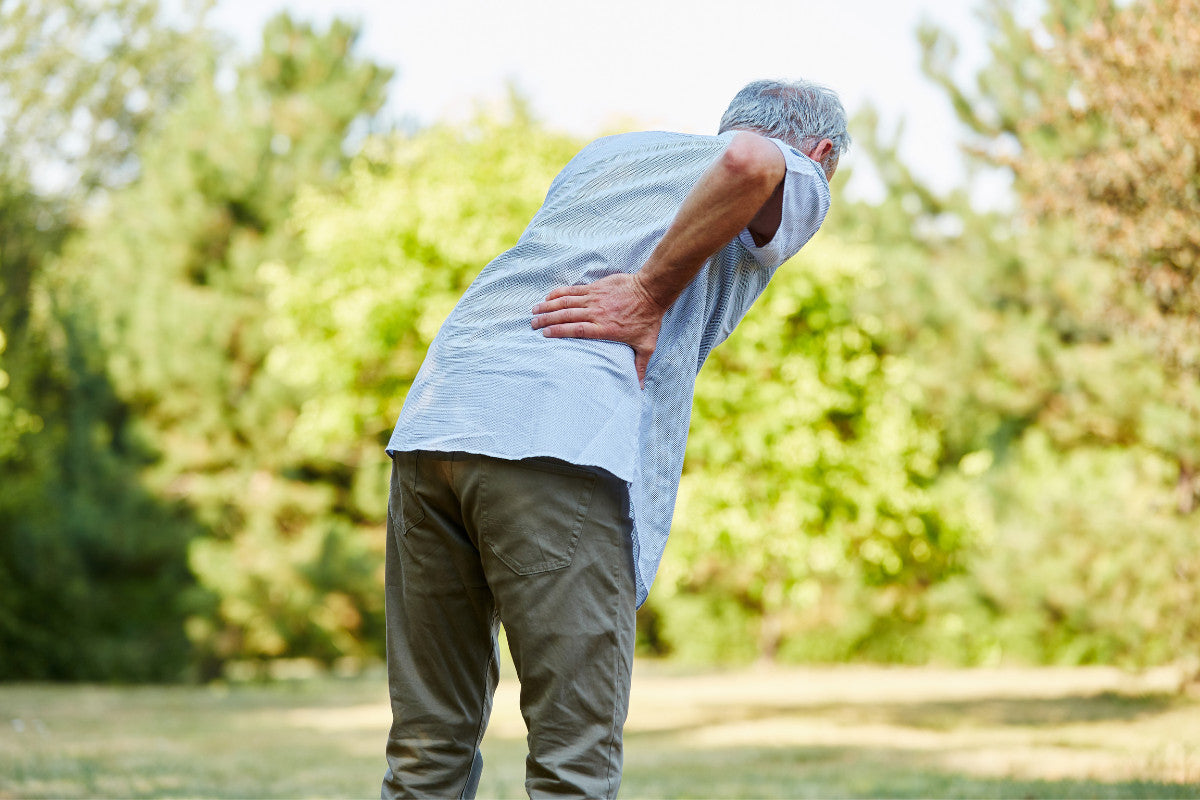Your Cart is Empty
FREE SHIPPING OVER $45 & RETURNS ON USA ORDERS. 365 DAY MONEY BACK GUARANTEE.
FREE SHIPPING OVER $45 & RETURNS ON USA ORDERS. 365 DAY MONEY BACK GUARANTEE.

Let's cut to the chase - today, we're tackling Degenerative Disc Disease (DDD). No frills, just the facts, and some handy tips to boot.
So, what is this thing called Degenerative Disc Disease anyway? Well, it’s not really a disease in the traditional sense. Instead, it’s more like a condition where the discs in your spine start to break down over time.
Imagine your spine as a stack of discs, or cushions, that act as shock absorbers between each vertebra. These discs are made up of a tough outer layer (annulus fibrosus) and a gel-like inner core (nucleus pulposus).
Now, as we age, these discs start to lose their water content and elasticity, making them more prone to damage and wear. As they wear down, they can cause all sorts of discomfort, from nagging pain to serious mobility issues. This process is what we refer to as Degenerative Disc Disease.
Now, let's talk about why our trusty spinal discs decide to throw in the towel:
Aging: Ah, the unavoidable march of time. As we get older, our spinal discs naturally degenerate, losing their ability to cushion and support the spine effectively.
Injuries: Remember that time you went a bit too hard on the basketball court or had a slip and fall? Those injuries can accelerate the wear and tear on your spinal discs, leading to DDD.
Genetics: Sometimes, it's in the genes, mates. If your folks had a history of spine issues, you might be more predisposed to developing DDD yourself.
Alright, how do you know if DDD is knocking on your door? Well, common symptoms include:
**If you suspect you might have DDD or are experiencing persistent discomfort, don't hesitate to reach out to your doctor. They can offer personalized advice and treatment options tailored to your needs.
Alright, enough with the doom and gloom. Let’s talk solutions! While we can’t turn back the clock, there are plenty of things you can do to ease the discomfort caused by DDD:
1. Stay Active 🏃♂️
Now, I know, the last thing you want to do when your back is acting up is hit the gym. But trust me on this one - gentle exercise, like swimming or walking, can work wonders for your spine.
2. Mind Your Posture 🧍♂️
Grandma wasn't kidding when she told you to sit up straight. Maintaining good posture can take the pressure off your spine and help prevent those flare-ups.
3. Heat and Ice Therapy 🔥❄️
Sometimes, a little heat or ice can be just what the doctor ordered. Experiment with hot packs and ice packs to see what works best for you.
4. Try Supplements 💊
I'm a big believer in the power of natural remedies. Fish oil, glucosamine, and turmeric are just a few supplements that may help reduce inflammation and ease discomfort.
5. Outback Pain Cream 🌿
Packed with all-natural menthol and camphor, it delivers an instant one-two punch of heating and cooling comfort to soothe discomfort.
6. Watch Your Weight ⚖️
Extra pounds put extra pressure on your spine. Keep it in check for a happier back.
7. Quit Smoking 🚭
Smoking restricts blood flow, which can slow down the healing process. Plus, it's just not good for you, mate.
8. Stay Hydrated 💧
Drink up! Water is your spine's best friend. Keep the fluids flowing for optimal spine health.
Remember, mates, there's no one-size-fits-all solution to DDD. So, don't be afraid to try different strategies until you find what works best for you.
**Always consult with a qualified healthcare professional for personalized recommendations and treatment options.
Let me know what topics you're interested in, and I'll do my best to include them in future blogs! Email me at mark@outbackoil.com
Please respond. 😊🙏
Excellent information. I’m going 2 pass this on
I ve
Got a seriously, chronic pain in my feet
from peripheral neuropathy & peripheral nervous system disorder. I’ve been using
Outback 4 several yrs so I’m always looking 4. Bargain.
Info please 4 PN. I’m on a rollator 90%
of the time & I can barely walk. Do U think that your pain cream w/camphor or natural menthol.
How much? Is it a roll tube like the Outback? What size?
Thanks 4 the info
Mark from Outback
April 19, 2024
Hey, Patti, I’d love to answer all of your questions! Please keep an eye out in your inbox for an email from me or the Outback Team.